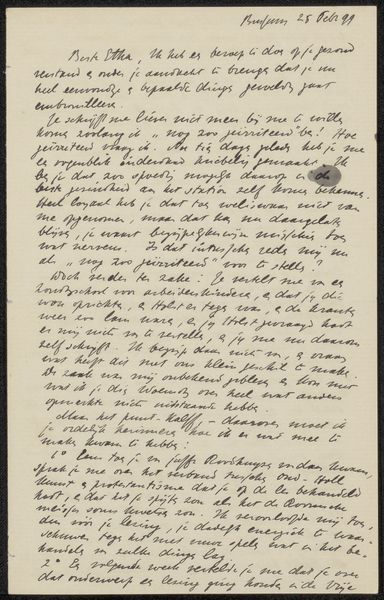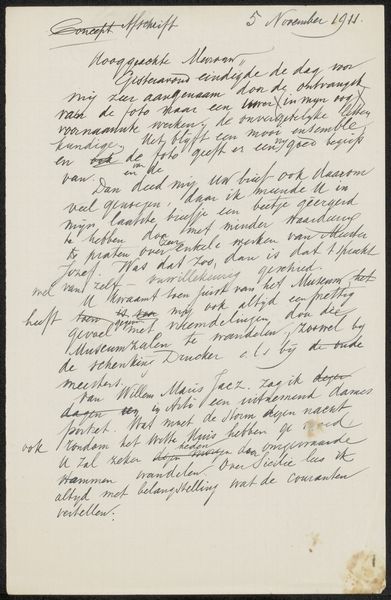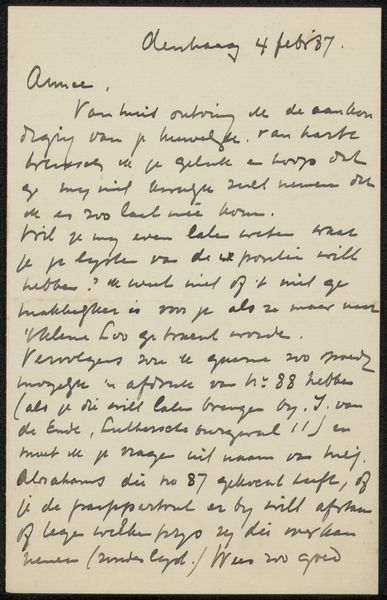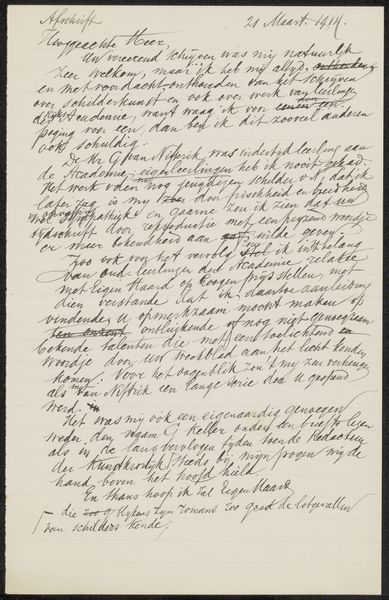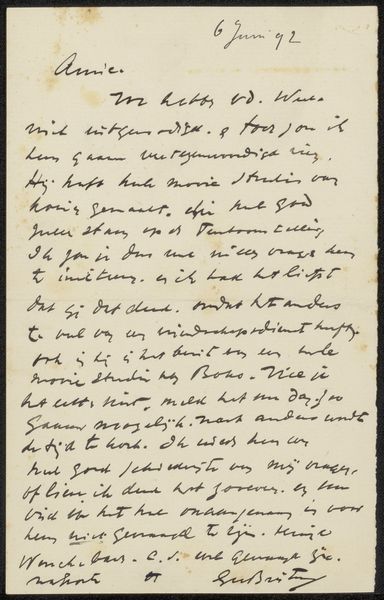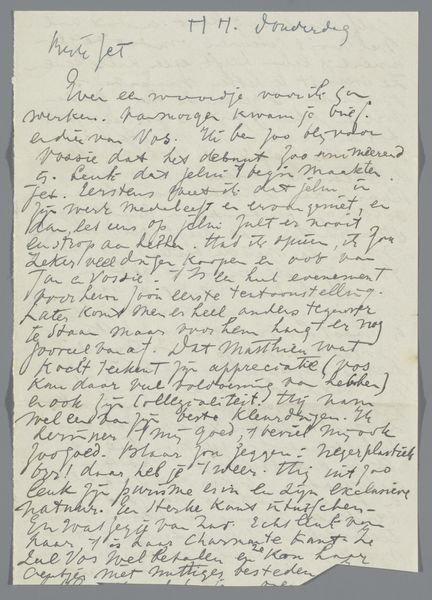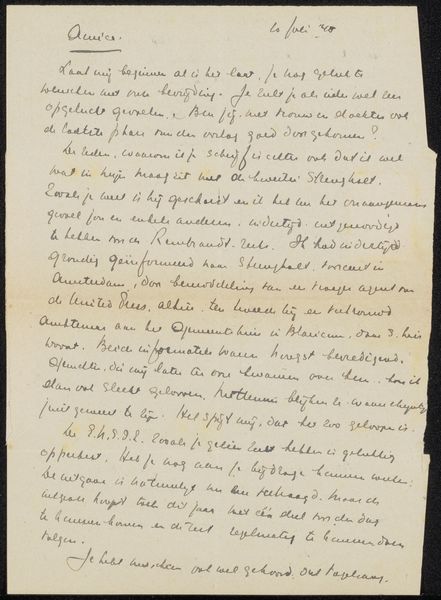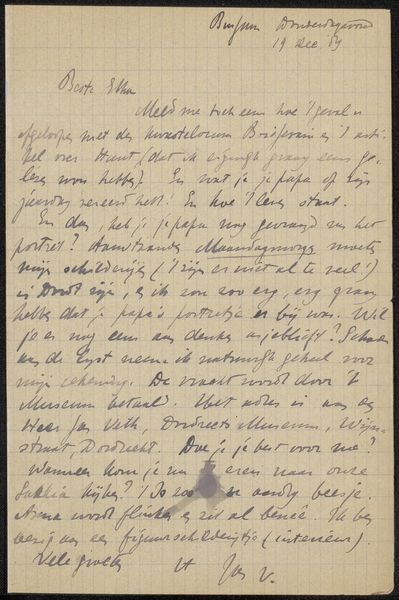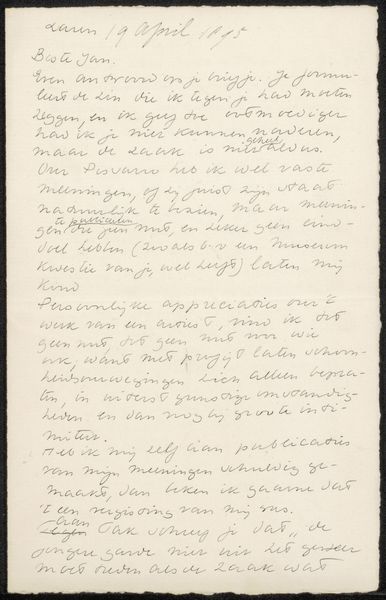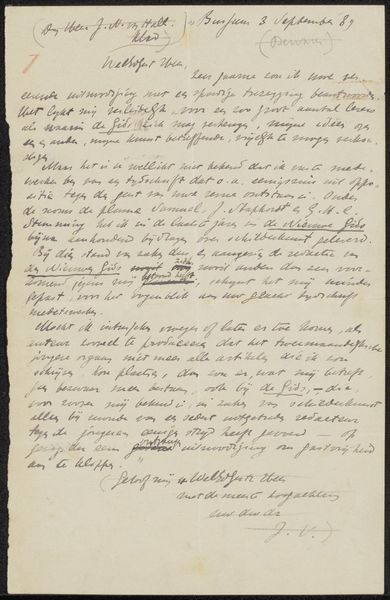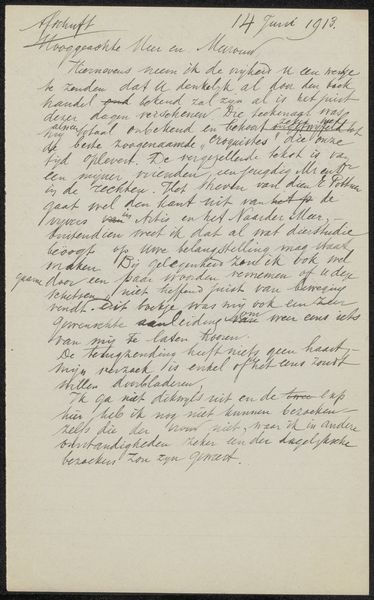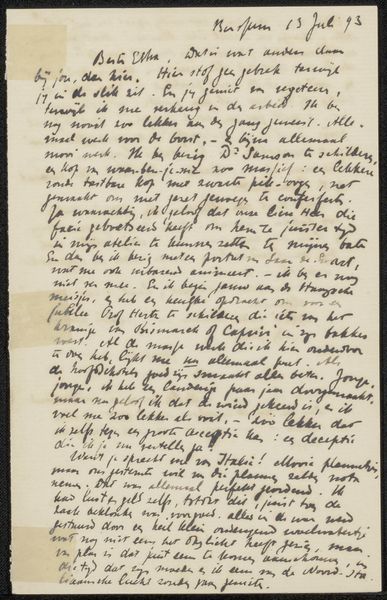
Brief aan Ina van Eibergen Santhagens-Waller c. 1878 - 1938
0:00
0:00
richardnicolausrolandholst
Rijksmuseum
drawing, paper, ink, pen
#
drawing
#
hand-lettering
#
hand drawn type
#
paper
#
personal sketchbook
#
ink
#
visual diary
#
ink colored
#
pen work
#
sketchbook drawing
#
pen
Copyright: Rijks Museum: Open Domain
Editor: Here we have "Brief aan Ina van Eibergen Santhagens-Waller" by Richard Nicolaüs Roland Holst, dating from around 1878 to 1938. It's ink and pen on paper, and held at the Rijksmuseum. Looking at the handwriting, it almost feels like peering into someone's private thoughts, but also a very deliberate creation with beautiful penmanship. What strikes you most about this letter? Curator: It’s interesting that you call it a "deliberate creation," emphasizing its *made* quality. For me, it’s fascinating to consider the materiality of this letter, beyond just ink on paper. Think about the socio-economic context. What kind of paper was this? How readily available was ink? And, what does the very *act* of hand-lettering, of consciously crafting each word, signify in a rapidly industrializing world? Is this a form of resistance to mass production? Editor: That's a really interesting point! I hadn't thought about the resistance aspect. I was more focused on the intimacy, but the choice of materials and the labor involved… So, are you suggesting that the medium itself is a commentary on the changing modes of communication during that era? Curator: Precisely. This wasn't a quick typed note or telegram. The slowness, the deliberate hand, and even the inherent imperfections of handwriting… These elements all push back against the mechanized forms of communication that were becoming increasingly prevalent. We might also ask how the intended recipient would have perceived this laborious method of communication versus a more common approach. Editor: So, understanding the materials and the process behind this letter offers a deeper understanding of the social and historical context? It’s not just about the content, but also about how that content was physically delivered? Curator: Exactly! The means of production – the physical act of writing, the choice of materials – shape our understanding of the work and its place within the broader cultural landscape. It also blurs lines between simple communication and higher creative purposes. Editor: That really changes how I see the letter. It's more than just words on paper. Thanks! Curator: Indeed. It’s a powerful reminder that even the most seemingly personal objects are embedded within complex systems of production and consumption.
Comments
No comments
Be the first to comment and join the conversation on the ultimate creative platform.
